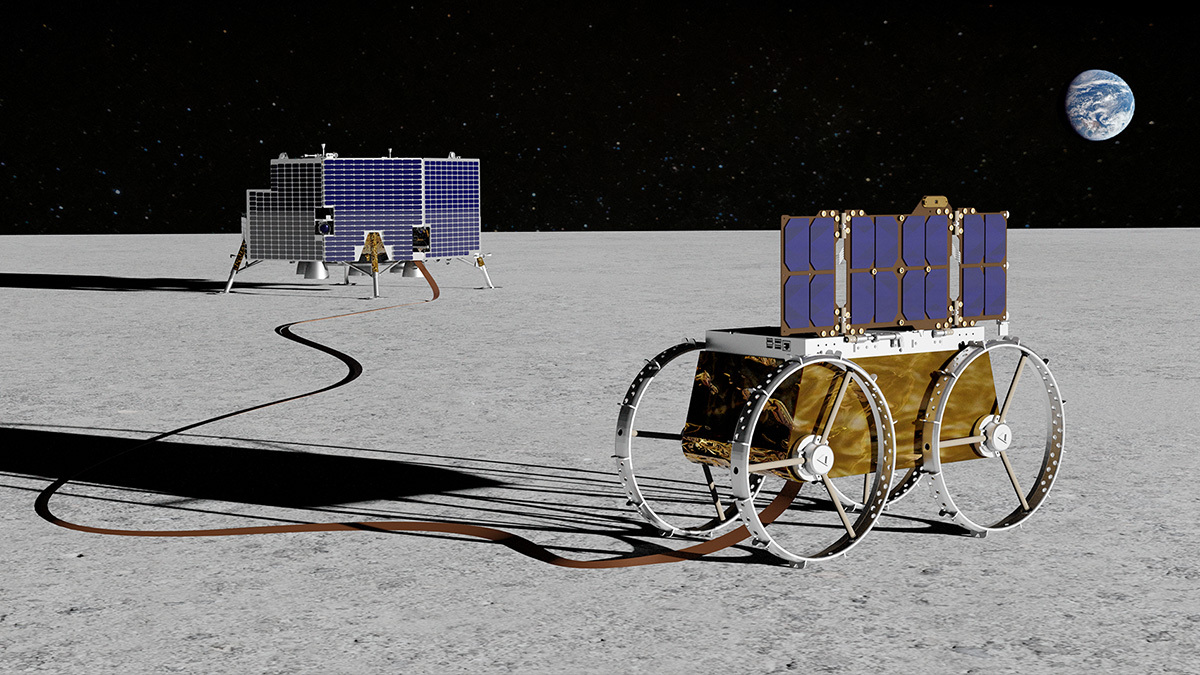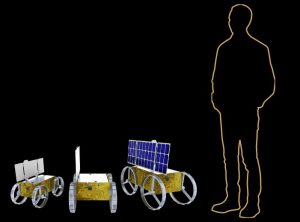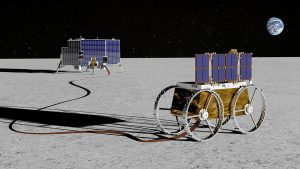
Specifically, the award will result in a demonstration on the Moon called LunaGrid-Lite, which will transmit power from a lunar lander to a tethered rover.
“LunaGrid-Lite will pave the way for power generation and distribution services on the Moon, and change the game for lunar surface systems like landers, rovers, habitats, science suites, and in-situ resource utilization pilot plants,” said John Thornton, Astrobotic CEO. “With renewable, uninterrupted commercial power service, both crewed and robotic operations can be made sustainable for long-term operations.”
During the planned demo the 6U CubeRover – delivered by Astrobotic’s Griffin lander – will unreel 1 kilometer of cable and receive the first high voltage power transmitted through a cable across the Moon’s surface.
The lunar logistics company based in Pittsburgh says this will serve as a pilot for its LunaGrid service, which aims to deliver commercial power service by the Watt to customers on the lunar surface.
The company writes:
“The full LunaGrid system will be a power generation and distribution service that could utilize the 20-meter-tall Vertical Solar Array Technology (VSAT) currently being developed under another NASA contract at Astrobotic.”
“In the LunaGrid-Lite demo, the lander’s solar arrays will play the part of the VSAT in generating power. Following landing, a CubeRover carrying a spool of specially designed cable will egress from the lander and deploy the cable to the lunar surface. Finally, the system will transmit 1 kW of power from the lander’s solar arrays through the cable to the CubeRover. Sensors throughout the payload will characterize and verify the system’s performance.”
It is planned that a CubeRover will be delivered on an upcoming Astrobotic lander mission by 2026, providing three facilities: a high voltage power converter, cable, and cable stowage and deployment system.
CubeRover
Last year, Nasa gave backing to Astrobotic to develop the CubeRover platform.

This will culminate in a commercial flight to the Moon for CubeRover on the previously mentioned lander mission, where it hopes to demonstrate the platform’s adaptability to the harsh environment and test the use of satellite communication relays to travel long distances.
According to its spec, the 6U CubeRover will weigh 10-12kg and support a payload capacity of up to 6 kg. Wired communications will be via Serial RS-422 and the CubeRover payload wireless protocol is 802.11n Wi-Fi. Two cameras are incorporated but additional 5 megapixel cameras can be installed.
See also: Darpa investigates commercial sector support for Moon manufacturing







